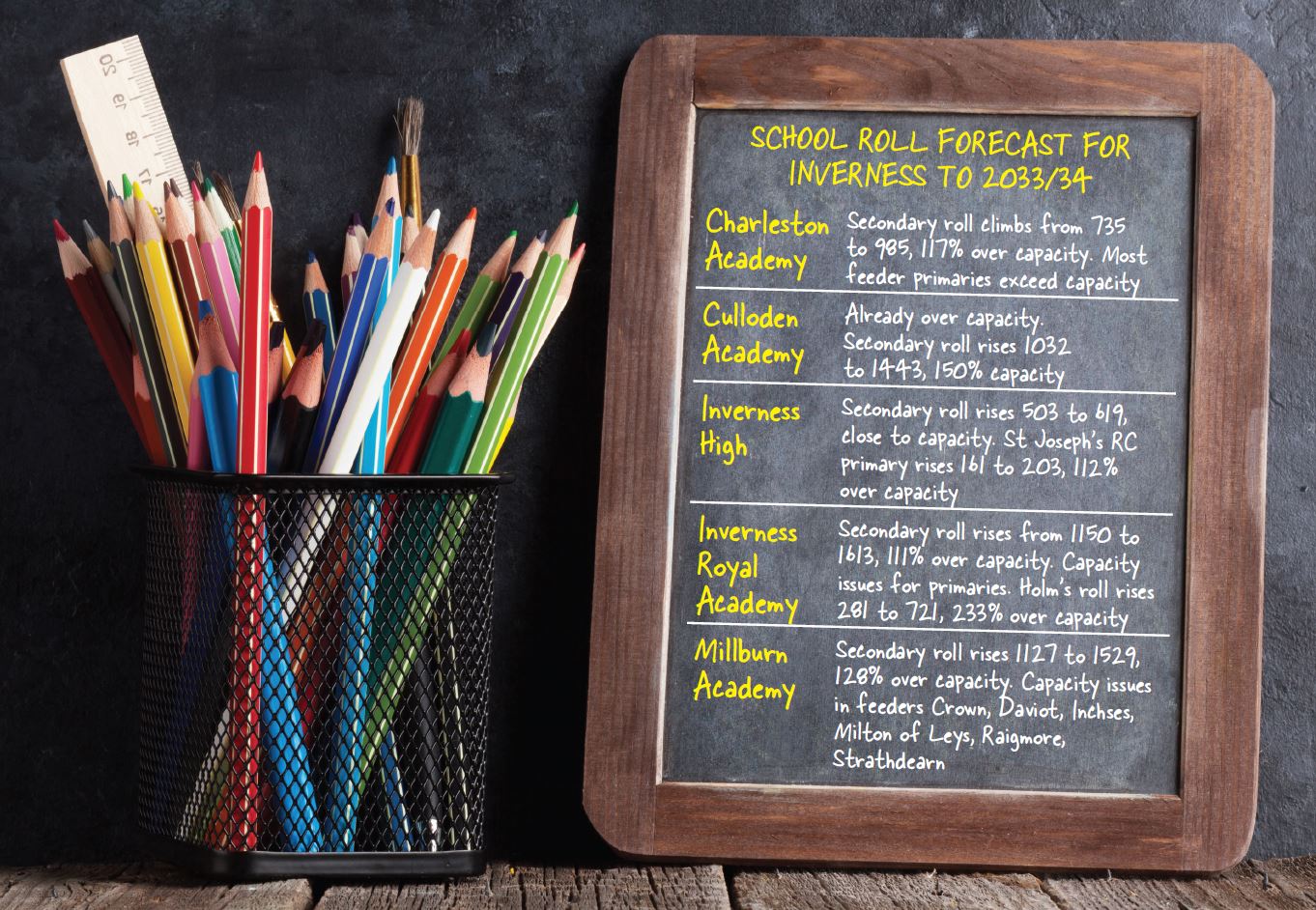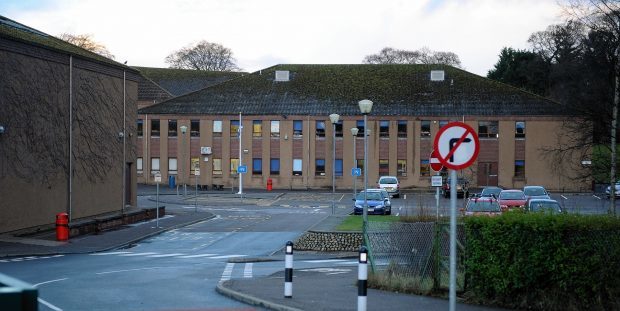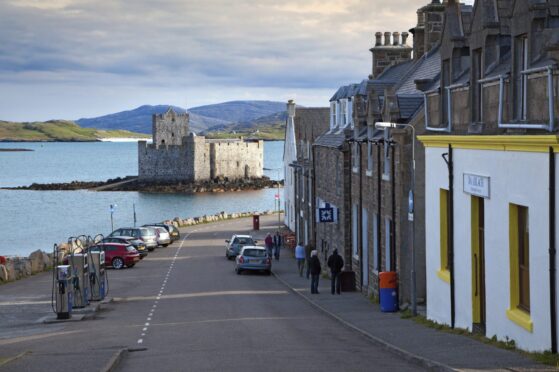Four out of Inverness’s five secondary schools will not be able to accommodate the number of pupils in its catchment, according to official projections released this week.
In the Highland capital all but one of the high schools are close to capacity, and one, Culloden, sits at 107% capacity already, predicted to reach 150% by 2033/4.
In less than four years, Charleston Academy, Millburn Academy and Inverness Royal Academy will be over capacity. Inverness High is best off, with seven years grace before it reaches capacity.
In the rest of the region, the figures show school rolls broadly stable or slightly increasing, with spikes in Lochaber, whose high schools jumps from 821 to 1003 by 2033/34 pushing it almost to capacity. Fort William’s Lundavra primary roll is set to rise massively, from 211 to 322, slightly over capacity.
>> Keep up to date with the latest news with The P&J newsletter
Only one school roll goes to zero, that of the island of Rum, where there will be no primary children by 2027/8, the report predicts. Neighbouring islands Eigg and Muck will fare better with numbers more than doubling to 14 pupils apiece.
The looming pressures in the Inverness area come as no surprise, say local councillors.
Culloden and Ardersier councillor Trish Robertson has frequently voiced her concerns about the pressure on schools coming from large-scale developments in her area, such as Tornagrain and Stratton.
She said: “Children will not achieve their full potential in crowded schools.
“Many of the secondary schools are at capacity and this will continue.
“New schools will be needed in the near future to provide classrooms.”
Inverness South councillor Ken Gowans has also frequently warned of the pressure on Inverness schools from rapid housing development.

He said: “The problems lies in unsustainable overdevelopment.
“It’s quite routine now for developers to apply for 25% more houses than the Highland Council guidance suggests.
“It’s all very well to build houses, but we need to build communities, and in order to build communities we need the infrastructure to keep pace with the housing and it’s simply not doing it.”
Inverness Ness-side councillor Ron McWilliam added: “The administration needs to get serious about the capacity issues they’re creating in our schools estate. After decades of neglect we have the worst condition schools in the country, yet Highland Council is the second highest beneficiary of the Scottish Government’s Schools for the Future Programme.
“The current overcapacity projections in Inverness are worrying. With mass housing developments being approved at such a fast rate and planning developer contributions coming in to the council’s coffers, education provision in these areas will need to be prioritised.
“However, children across the region should also expect to be taught in classrooms that are modern, well-equipped and pleasant to be in.”
Highland Council issued a briefing paper earlier this year acknowledging the pressure on schools and the urgent need for investment.
The briefing says 12 council schools currently exceed capacity, and a further 21 schools are expected to do so within the next five years, 19 of them in Inverness.
The briefing also points out that Highland has the highest number of schools graded as C – poor for both condition and suitability – in Scotland.
Mrs Robertson said: “Highland Council has over 200 schools to maintain with a reducing budget.
“How all this can be dealt with in the existing financial position remains unclear. I extend another plea to the Scottish Government to look again at the Highland position and extend extra funding.”
Council Leader Margaret Davidson said: “Our capital programme for the next five years will see the council spending £213 million on our school estate.
“The roll issues are being addressed with new builds and the new modular buildings where necessary and they will be one of the key factors as we plan the next revision of the capital programme.”










